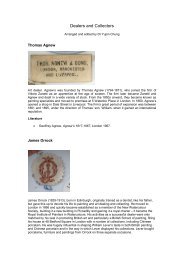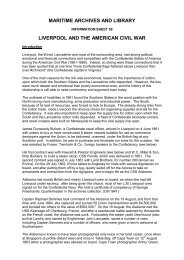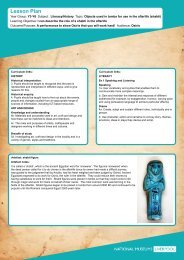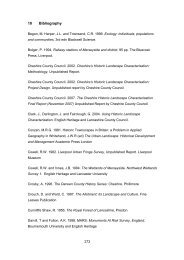Famille Noire porcelain - National Museums Liverpool
Famille Noire porcelain - National Museums Liverpool
Famille Noire porcelain - National Museums Liverpool
Create successful ePaper yourself
Turn your PDF publications into a flip-book with our unique Google optimized e-Paper software.
desirability has produced many imitations, made not only in China and Japan, but<br />
also in Europe. Jenyns also mentioned the interesting aspect of having used blue<br />
and white pieces of which the design had been ground away in order to be repainted<br />
in the <strong>Famille</strong> <strong>Noire</strong> palette. 8<br />
The major publication which expressed profound scepticism towards the authenticity<br />
of <strong>Famille</strong> <strong>Noire</strong> large scale vases was John Alexander Pope’s catalogue of the<br />
Chinese <strong>porcelain</strong>s in the Frick collection. 9 Pope believed that all of the large scale<br />
objects were fakes of the later 19 th century. He supported this theory with various<br />
examples of serious collectors of Chinese <strong>porcelain</strong>, who mainly bought in the Far<br />
East and who did not possess any of those pieces (such as Charles Lang Freer and<br />
Alfred Hippisley). Apart from a stylistic analysis that lead Pope to believe that these<br />
pieces were fakes, he mentioned the inventory of Augustus the Strong’s collection in<br />
Dresden of 1779, which had only listed five small cups and saucers with black<br />
enamel decoration and which seem to be true Kangxi <strong>porcelain</strong>. As a Far Eastern<br />
collection, Pope referred to the <strong>National</strong> Palace Museum in Taiwan which had never<br />
seen an example of a large scale <strong>Famille</strong> <strong>Noire</strong> vase before it was presented with<br />
one piece in 1950. Pope very much expressed his regret about the uncertainty that<br />
surrounded the <strong>Famille</strong> <strong>Noire</strong> large scale type, and in his discussion of the Lady<br />
Lever’s Chinese collection, Oliver Impey, went even further in stating that no<br />
documentary evidence has yet been found for the Kangxi period of <strong>Famille</strong> <strong>Noire</strong>, in<br />
contrast to those of the Yongzheng and Qianlong periods, where pieces are<br />
documented. 10<br />
The aesthetic and monetary value of <strong>Famille</strong> <strong>Noire</strong><br />
Now, after reviewing the different approaches and views from the literary sources<br />
one has to pose the question why one would have wanted to fake <strong>Famille</strong> <strong>Noire</strong> ware<br />
in the first place? One possibility might be found in the type of decoration found on<br />
those objects.<br />
8<br />
Jenyns Soame, Later Chinese <strong>porcelain</strong>: the Ch’ing dynasty, 16441912, London 1951, p. 34<br />
9<br />
Pope John Alexander, The Frick Collection: an illustrated catalogue. Vol. 7 Porcelains,<br />
Oriental and French, Washington 1974, pp. 8790<br />
10<br />
Impey Oliver, “Lever as a collector of Chinese Porcelain”, in Morris, Edward (ed.), “Art and<br />
Business in Edwardian England: The Making of The Lady Lever Art Gallery”, Journal of the History of<br />
Collections, Vol.4, Nr. 2, 1992, pp. 235236 in particular for the discussion on <strong>Famille</strong> <strong>Noire</strong> wares.<br />
4



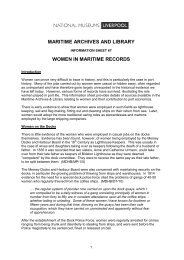
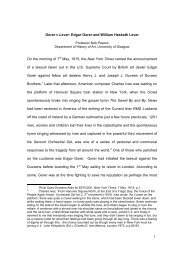
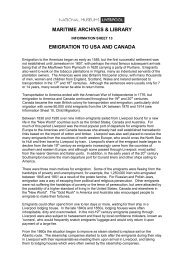
![Ancient Egypt trail [227kb .pdf] - National Museums Liverpool](https://img.yumpu.com/48998817/1/184x260/ancient-egypt-trail-227kb-pdf-national-museums-liverpool.jpg?quality=85)

